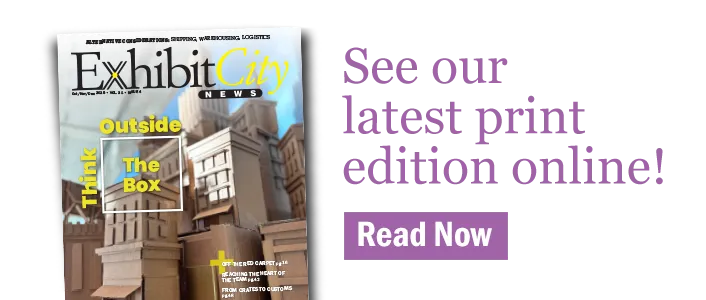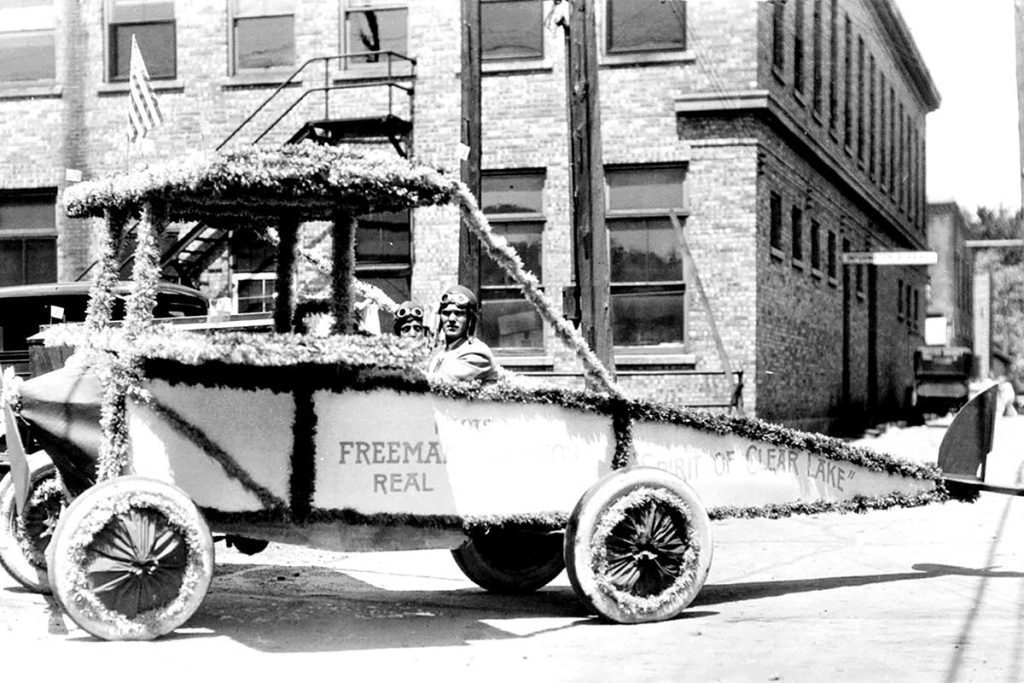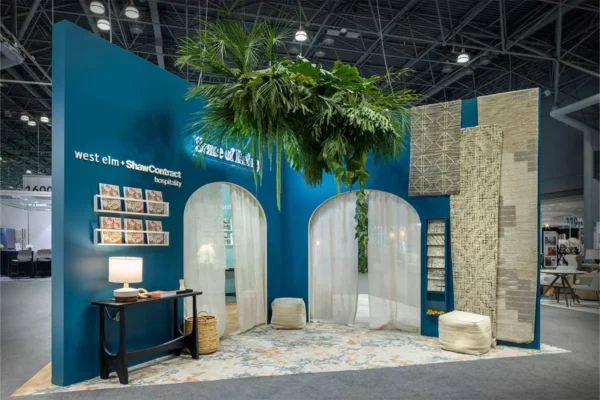by Bob McGlincy, Willwork
U.S. tradeshows today are a $100 billion dollar industry that attracts over 80 million attendees a year. Tradeshows promote brands, sell products, and generate tax revenues. Tradeshows create millions of jobs and transform empty convention centers into magical marketing extravaganzas.
This “invisible industry” is truly amazing! But did you ever stop and wonder, how are the shows produced? Where did the companies come from? Who does the actual work?
A Brief History of Trade Show Companies in the U.S.
Prior to World War I, mega-exhibits and tradeshows were principally a part of world’s fairs. Smaller exhibits were found at farm shows, state fairs, museums, hotels, and in department store windows. Installation labor was provided by the show organizers, the contractors constructing the convention halls, the venues, or sometimes by the companies building the exhibits—cabinet makers, window dressers, decorators, sign makers, flag makers, the retail display builders, or the companies themselves.
Hotels held small events in meeting rooms and banquet halls. Larger arenas at the time, like Madison Square Garden and the Chicago Coliseum, primarily hosted sporting, entertainment, and political events. As the number of associations, tradeshows, and venues, increased, so did the demand for companies and people to produce live events. This trend expanded dramatically during the 20th century, starting with a few early pioneers.
Brede, Fern, Shepard, Freeman, and GES
1898. Possibly the first General Service Contractor in the country, Brede started in Massachusetts in 1898. The founder’s son, Bill, opened a rental furniture business in the ‘20s, and is credited with inventing “pipe and drape” on the show floor. Brede purchased Exhibit Aids in the ‘70s, partnered with Allied Convention Services in the ‘80s, and was acquired by The Expo Group in 2020.
1901. “George E. Fern Decorator” is first listed in the Cincinnati Business Directory in 1909, but an earlier decorating company, under his father’s name, dates to 1901. Fern produced the Ohio Valley Exposition in 1910 and is credited with the first use of a standard rental booth. In 1919, they provided show-floor electrical services; and in 1927, at the Home Beautiful Exposition, they built an indoor two-story structure, along with other exhibits. During the ‘20s and ‘30s, they produced shows in all regions of the country. In 1962 they were purchased by Budig Trucking, and then sold in 1985 in order to focus strictly on events. Freeman purchased Fern in 2011, then the employees re-acquired the company one year later. C.E.O. Aaron Bludworth led the company from 2008 until June 2023. In July 2023, Fern was acquired by MSouth Equity Partners (the parent company of nth Degree).
1905. Shepard Decorating was started by Virgle Shepard in Atlanta in 1905. Their initial projects included parade floats, Christmas decorations, and department store window displays. In 1939, Shepard created the Gone with the Wind premiere celebration. During the ‘60s, they became the first U.S. contractor to manage conventions in China, and in 1976, they produced the first trade show at the Georgia World Congress Center. Originally a family run business, Sherman Wade and Carl Mitchell took the reins in 1982. The company became an ESOP in 2012. Today, Shepard produces shows nationwide with warehouses and offices spread across the country; Carl Mitchell is the Executive Chairman.
1927. Donald “Buck” Freeman started his career in college, planning fraternity parties and parades. He founded the New Idea Service Company in Iowa City, and then established Freman Decorating in Des Moines in 1927. World War II in the coming decade necessitated changes. In 1950 he opened the Dallas office to provide services for the Texas State Fair. That office soon became the corporate headquarters. The company purchased Sullivan Transfer in the early ’60s, and by 1963 it was doing a million dollars in revenue (equivalent to over ten million dollars today). Don Freeman Jr. became President in 1972, expanded the company regionally, and then acquired six East Coast GES offices in 1981. Acquisitions of Fern, Champion, and Immersa Marketing came in 2011, and Sparks in 2023. Over the decades, Freeman has evolved from a local decorating company to a national general contractor to a worldwide live event agency. The company has 30 domestic locations and, according to a Forbes article, employs 39,000 people.
1939. GES’ roots stem from Manncraft—a business that started as a sign and window company in Kansas City in 1939. They began selling exhibits in the Southeast in the ‘50s. Greyhound Corporation purchased them in 1969 and changed the name to Greyhound Exposition Services. When GES sold off offices in 1981, Freeman focused on the Eastern U.S., and GES produced shows in the west. In 1993, GES purchased United Expo and Andrews Bartlett (including their labor division, ECC) and then expanded back east. GES owns ExhibitGroup/Giltspur, is part of Viad, and is second only to Freeman in terms of revenue and numbers of employees.
Post war expansion
A few exhibit builders originated prior to 1940 (for example, George P. Johnson, Ohio Display, Taylor, and Jack Morton) but it was the post-war economic boom that fueled the growth of shows, and the need for larger venues, more builders, and more contractors.
After World War II, businesses retooled from military to commercial production. Consumer spending ignited the economy and propelled a marketing boom. Brands became more prevalent. Tradeshows sprang up in hotels. Show floor labor was typically supplied by the general contractor, supported by local unions. Large, single purpose trade show centers weren’t built until the late ‘50s. LVCC opened in 1959, and McCormick Place in 1960. These centers spurred the growth of larger in-person events, which led to more centers being built in more cities. The industry took off in the early ‘70s, propelling an economic frenzy for display houses, contractors, and labor companies, across the country.
The History of the Evolution of Tradeshow Labor will continue in Exhibit City News’ 2024 quarter 2 print.
Willwork creates labor and technology solutions for experiential marketing applications, including tradeshow exhibits, corporate events, brand activations, and themed retail environments. Bob McGlincy is director, business management. He can be reached at Bob.McGlincy@willwork.com
This story originally appeared in the Q1 2024 issue of Exhibit City News, p. 26. For original layout, visit https://issuu.com/exhibitcitynews/docs/ecn_q1_2024.
























